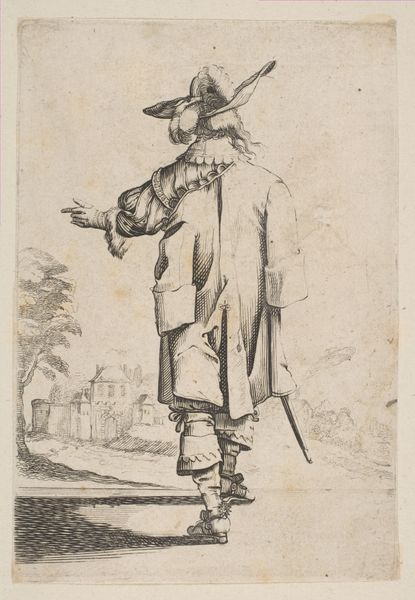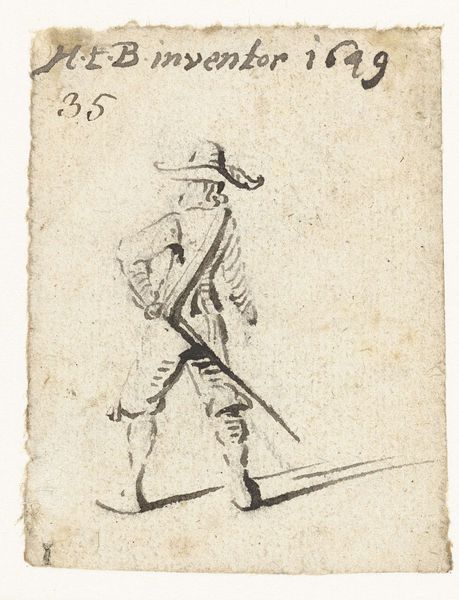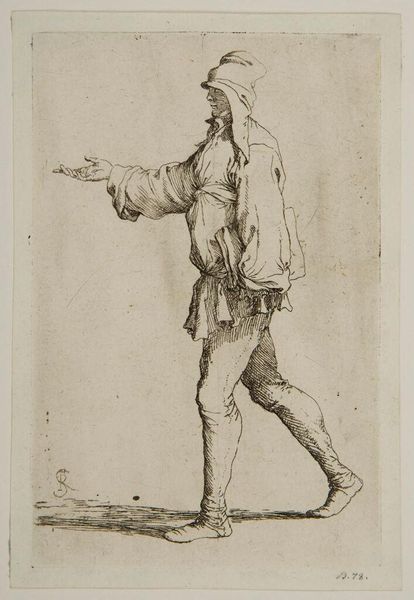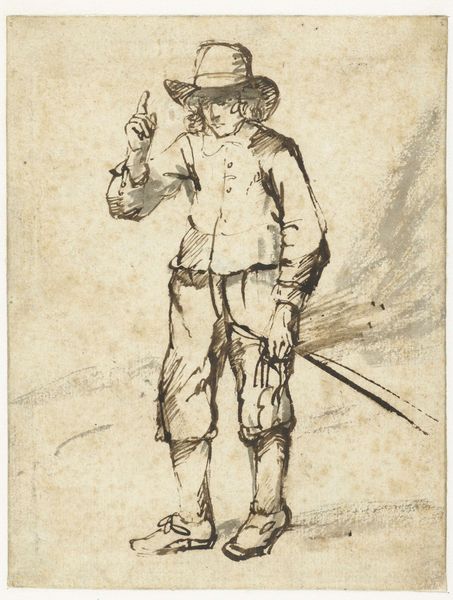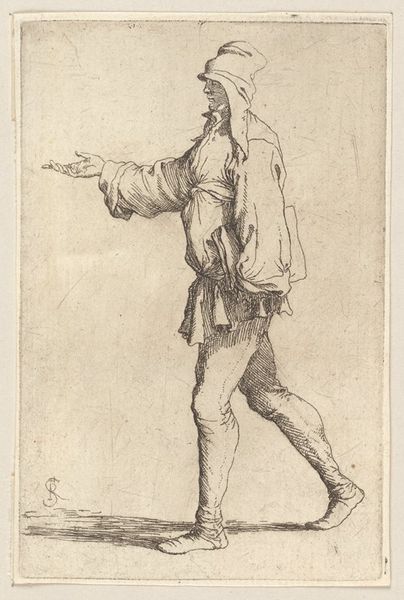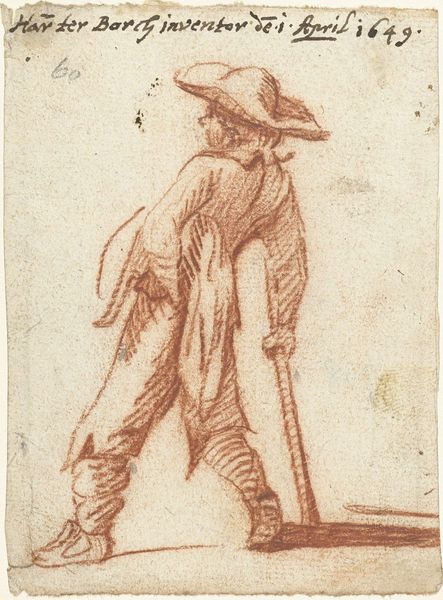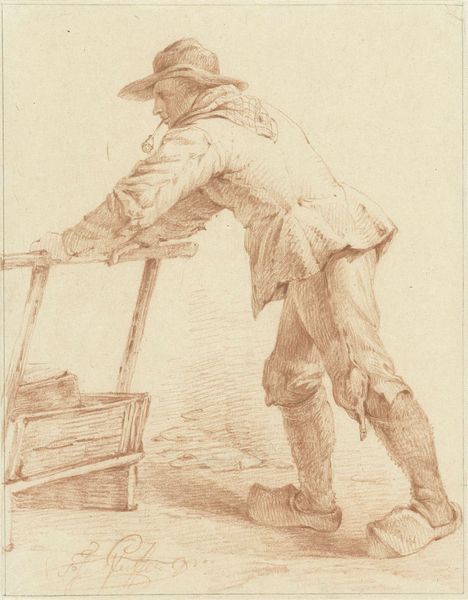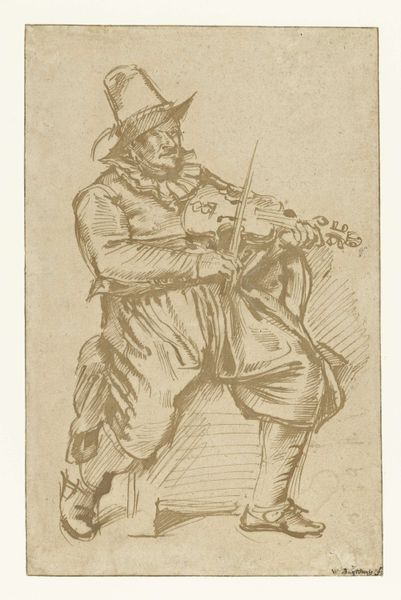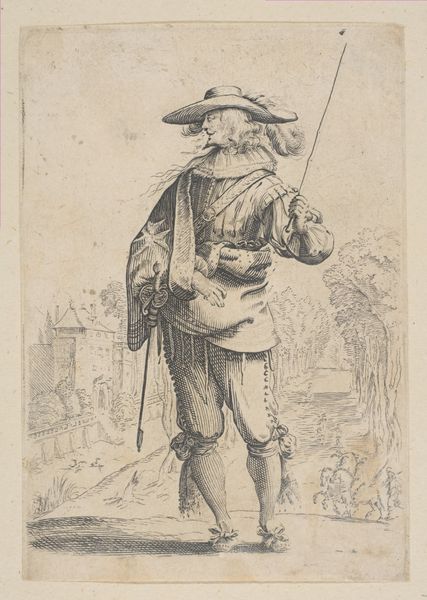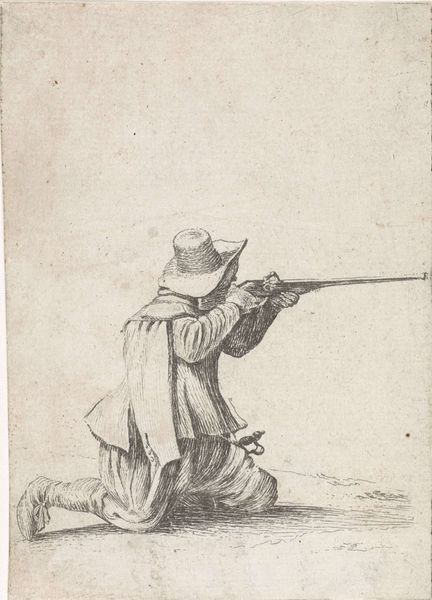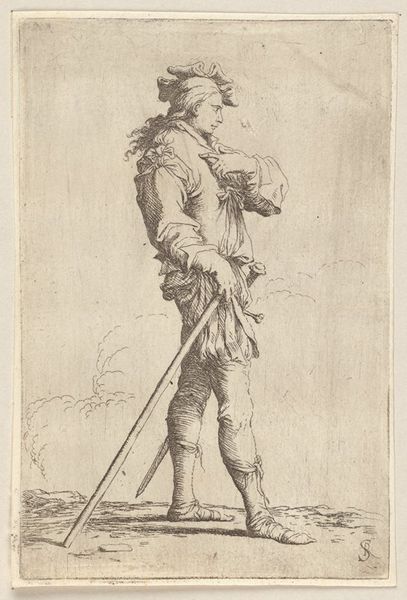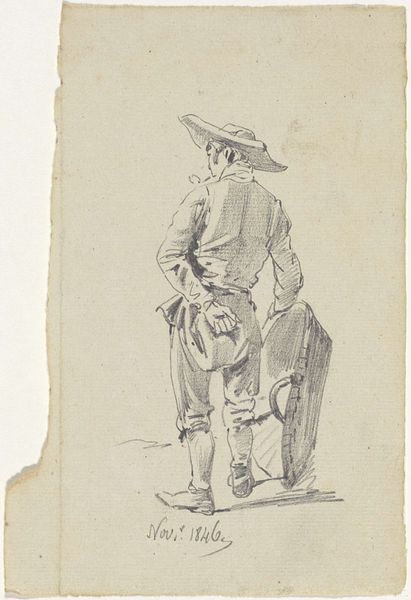
drawing, pencil
#
portrait
#
drawing
#
light pencil work
#
quirky sketch
#
baroque
#
dutch-golden-age
#
pen sketch
#
pencil sketch
#
figuration
#
personal sketchbook
#
sketchwork
#
ink drawing experimentation
#
pen-ink sketch
#
pencil
#
sketchbook drawing
#
genre-painting
#
sketchbook art
Dimensions: height 154 mm, width 139 mm
Copyright: Rijks Museum: Open Domain
Harmen ter Borch made this drawing of a seated, drawing man around 1650, likely using graphite or black chalk on paper. The soft, granular nature of the material lends itself to a quick, sketchy approach. You can see how Ter Borch used short, hatched lines to build up tone and volume, suggesting the folds of the sitter's clothing and the contours of his face. The image feels immediate, capturing a fleeting moment of observation. Drawing was a fundamental skill for artists of this period, a means of study, preparation, and documentation. The materials were relatively inexpensive, so were accessible to a wide range of practitioners. But it also required a lot of training. The figure looks like he is drawing, perhaps a copy of another artwork, and is engaged in his own training. So, considering the material and the making helps us to appreciate the drawing not just as a record, but as an act of labor, a testament to the artist's skill and the sitter's concentration.
Comments
No comments
Be the first to comment and join the conversation on the ultimate creative platform.
